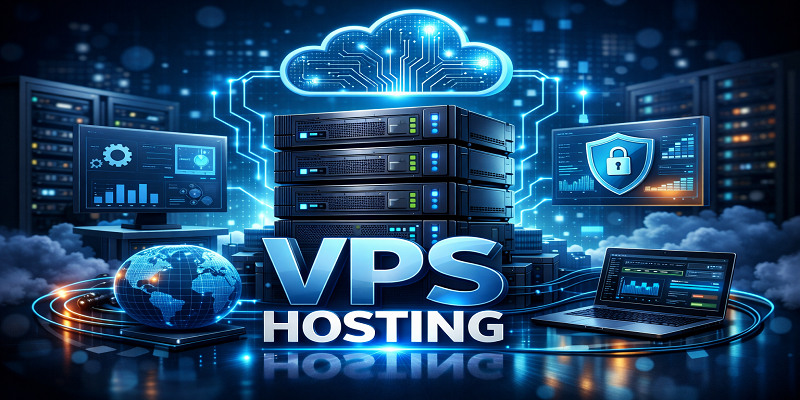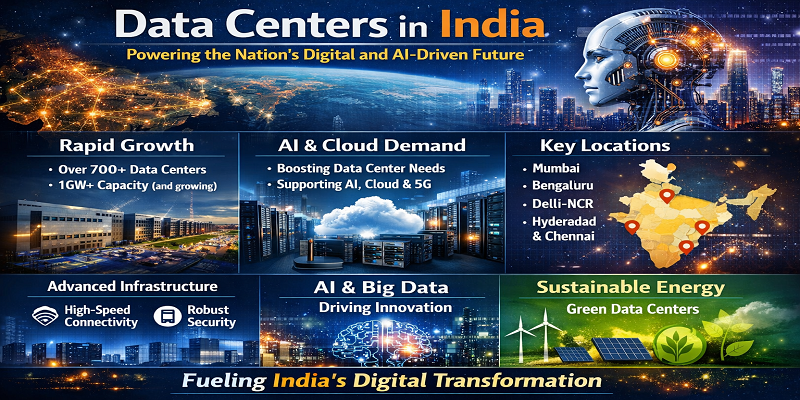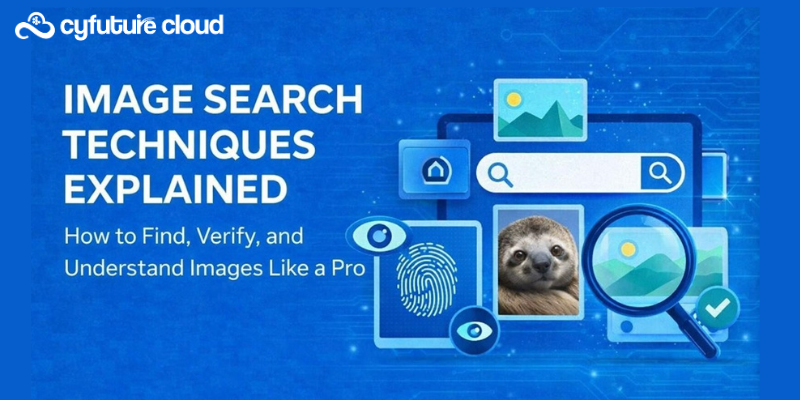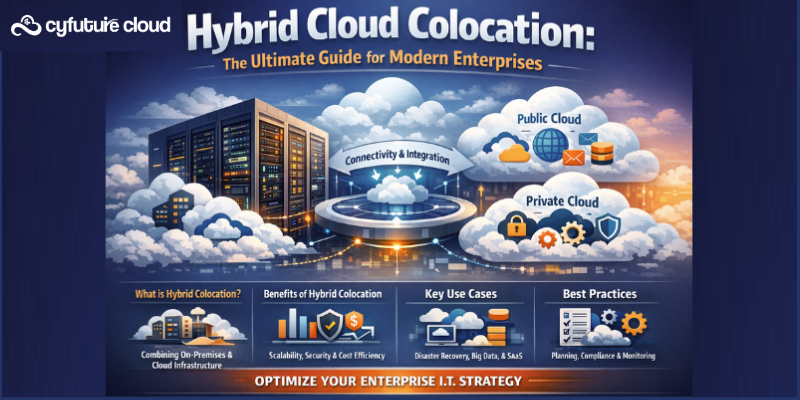Today, we are going to reimagine the way the computing ecosystem has evolved through all these years. Computer science has unlocked an endless number of opportunities for mankind. According to some experts, our civilization has only scratched the upper surface of technology yet, the applications of technology that we know today are just the tip of the iceberg. The undiscovered aspects of technology are still unfathomable.
Computing is a term that simply means that you are trying to perform an activity that comprises precision and efficiency. It is a goal-oriented activity that has several aspects associated with it relating to science, mathematics, engineering, technology, and social aspects too. Cloud computing has shaped our computing experience remarkably. Before we discuss cloud computing, let us illustrate the major types of computing that exist.
Personal Computing: Computing done at an individual level, mostly ordinary requirements involving small calculations, creating records, browsing the internet, accessing information, and playing games. These activities generally don’t require high computing efficiency, but they tend to easy-up the efficiency of work of a person doing a desk job.
Mobile Computing: When personal computing is done on a portable device such as a smartphone or any PDA (personal digital assistant), we call it mobile computing. We are all familiar with this kind of computing because we all have access to smartphones and tablets. These devices also allow us to stay connected and be productive on a real-time basis.
Cloud Computing: Our favorite on the list is cloud computing because it is an integral part of all types of computing. Whether it is high-level computing (eg quantum computing) or low-level computing (eg personal computing), they all need cloud resources such as network bandwidth, storage, security, processing power, and infrastructure.
We will discuss various aspects of cloud computing in the later sections of this blog. Cloud computing is not just a computing method but it is a concept that allowed us to scale our computing requirements to unfathomably stretchable limits. Cloud computing as we know it today is more robust than ever and is going to provide seamless applications in the future.
Distributed Computing: When we want to extend our approach to handling dense computing requirements, we avail ourselves of a distributed computing environment that comprises a network of computers connected together. This group of computers poses as a single computer performing one big computing task at once that is generally very complex.
Quantum Computing: The theory of quantum physics or quantum mechanics led to the discovery of quantum computing. Quantum computing is a technique that allows us to compute tasks that are far beyond the capabilities of ordinary computers. Quantum computing requires extensive hardware and software systems for dense computing.
Edge Computing: Computing architecture built in proximity to the computational resources at the edge of a network is called edge computing. When the devices are kept closer to each other where data is generated and consumed within the allocated setup, the computing speed is good and it reduces the chances of latency and other computing inefficiencies.
High-performance Computing: Just like quantum computing, supercomputers (as the name suggests) are extremely high-performance computing systems having remarkable processing speeds. These systems are specialized for performing intensive tasks such as weather forecasting, simulations, ciphering, and deciphering dense algorithms.
All these computing systems have close relationships with cloud computing. Cloud computing has become an intrinsic part of all computing models because it provides the flexibility to scale up or down the computing resources at any given time. The existing computing ecosystem is quite unpredictable, and it is difficult to manage storage and network. Cloud computing offers a one-stop solution to all computing requirements.
Cloud Integration with the Latest Technologies
Cloud integration is critical to the success of any technology that is backed by computational resources. As far as technology is concerned, everything is processed, governed, and consolidated by computers only. Cloud provides accessibility to every computational requirement. Inevitably, whether it is AI or 5G technology, cloud integration is definitely a dire requirement for their functioning. Let us the address cloud integration mechanism.
Cloud-Powered Artificial Intelligence (AI)
Cloud computing is quite relevant and useful for the successful functioning of devices run by artificial intelligence. Cloud computing provides the necessary computing power and storage for AI to function effectively. Cloud-based AI services, such as Amazon Web Services (AWS) and Microsoft Azure, allow developers to easily build, train, and deploy AI models. The entire AI structure is dependent on the resources provided by the cloud.
5G Technology & Cloud Data Management
Cloud computing is important for processing colossal amounts of data generated by 5G networks. There are different types of cloud providers such as Google Cloud and IBM Cloud, which are working with 5G providers to develop edge computing solutions that bring computing resources closer to the end-users, reducing latency and improving performance. For making that possible, cloud computing is the only answer.
Quantum Cloud Computing Functions
The actual Quantumania is the collaboration of cloud computing and quantum computing only, unlike portrayed in the Avengers movie. Very selective cloud providers offer quantum computing services that allow developers to access quantum computing resources without having to invest in their own hardware. IBM, Amazon, and Microsoft are among the major cloud providers that offer quantum computing services.
Blockchain Technology
Ever since the inception of blockchain technology, the only thing that concerns the users the most is the computing limitations incurred during the mining process in Blockchain Environment. Cloud computing provides the necessary computing power and storage needed for blockchain to function effectively.
Cloud-based blockchain services, such as AWS Blockchain and Azure Blockchain, allow developers to easily build and deploy blockchain-based applications. As time passes, the cloud resources have become more efficient and scalable. So, blockchain technology is heavily dependent on cloud technology without a doubt.
Internet of Things (IoT)
Cloud computing provides the necessary infrastructure for IoT devices to connect and exchange data. Cloud-based IoT platforms, such as AWS IoT and Azure IoT, allow developers to easily build and manage IoT applications. The concept of IoT and edge computing is similar as both computing environments work in proximity to the devices connected in a close loop. Both are highly dependent on cloud resources for functioning.
Augmented Reality (AR)
Cloud computing provides the necessary computing power and storage needed for AR applications to function effectively. Augmented reality or Virutual-reality is going to set the future as most of the things will be visually represented with these AR-integrated devices only and Cloud-based AR platforms, such as Google Cloud ARCore and Microsoft Azure Spatial Anchors, allow developers to easily build and deploy AR applications.
Cloud-Supported Biotechnological Application
Biotechnology is a branch of biology that is one of the most intricate fields of study. It requires dense genetical study and accurate analogy of findings. Cloud computing provides the necessary computing power and storage for biotech research and development. Cloud-based biotech platforms, such as AWS Genomics and Google Cloud Life Sciences, allow researchers to easily analyze and process large amounts of genetic and genomic data.
Therefore, cloud integration is critical to the success of many of the above-mentioned technologies. Cloud computing provides the necessary computing power, storage, and infrastructure needed for these technologies to function effectively and efficiently. As these technologies continue to evolve, cloud integration is likely to play an even more critical role in their success. It is almost unimaginable to think of a world without cloud computing.
Applications and Services Offered by Cloud Service Providers
Cloud service providers offer a wide range of services to their customers. Being a business owner you have the flexibility to avail of the cloud services separately or all-inclusively. Cloud services have evolved a lot in the past few years. Cloud services can act as pillars for elevating businesses by providing technological support. For every technology, computing resources are fundamentally required and cloud providers are specialists in that area.
Infrastructure as a Service (IaaS)
IaaS is a cloud computing model is a comprehensive model focused on providing an entire computer infrastructure to the users. Cloud service providers offer virtualized computing resources, such as servers, storage, and networking, over the Internet. Customers can use these resources to build and manage their own IT infrastructure. The concept simplifies the rendering of service a lot as customers take charge of the entire maintenance of the setup.
Platform as a Service (PaaS)
Platform as a Service is another cloud computing model in which you can get a platform for developing your own applications. The service provider offers a platform where you can develop, run, and manage software applications seamlessly.
All the computing resources required in a development platform will be at your disposal. Depending on the complexity and scale of your requirements, the charges will vary. You will typically get preconfigured development tools, middleware, and operating system.
Software as a Service (SaaS)
Software plays a critical role in streamlining many business operations but having accessibility to appropriate software packages is quite difficult. Therefore, cloud service providers also provide software applications over the Internet, alternatively known as Software as a Service. Clients can access and use these applications through a web browser or mobile app, without having to install or maintain the software themselves.
Cloud Storage
Storage is a fundamental requirement in computing and security is just as equally important as having a storage space. Services related to cloud storage, security, and easy accessibility over the internet come under the responsibility of the cloud service provider. Cloud storage services are typically scalable, flexible, and cost-effective, making them a popular alternative to traditional on-premises storage solutions and, it is more prudent too.
Content Delivery Network (CDN)
Among all other services, cloud service providers also offer CDN service which allows cloud service providers to distribute content, such as videos, images, and other media, to users around the world. CDN providers usually use a network of servers located in different regions to transmit content quickly and efficiently. The usage of CDN services became more prominent as social media platforms became household usage.
Database as a Service (DBaaS)
DBaaS is one of the critical requirements of organizations that need to assess large chunks of data every second and for that, they require preconfigured database instances. In this service package, providers offer database management services to customers. DBaaS providers typically offer preconfigured database instances that customers can use to store and manage their data. The service greatly helps in expediting data management.
Internet of Things (IoT) Services
There are different types of underlying components behind the working of IoT, such as network connectivity, sensors, devices, user interface, data processing, etc. These components require cloud resources to run seamlessly. Providers of cloud service help customers connect and manage their IoT devices over the Internet. These services generally involve device management, data collection, and analytics.
There are a plethora of applications once you open the umbrella of cloud services and if you look closely, every architecture run on computer resources is capable of integrating with cloud services and it is necessary too. Cloud resources are primarily there to streamline every known operation run on computerized infrastructure. The above-mentioned services are mainstream services rendered across the world.
Tools for Optimizing Cloud Services
We are living in a world that is continuously evolving and those who fail to stay abreast with the constantly evolving ecosystem struggle a lot to remain sustainable. Similarly, cloud computing services need to rewire their methods of operations and technological integration so they continue to provide computing resources as a service. There are several tools available for optimizing the services offered by cloud service providers.
Cloud Management Platforms: These are tools that help customers manage and optimize their cloud infrastructure across multiple cloud providers. CMPs typically offer features such as cost management, performance monitoring, and automation.
DevOps Tools: Tools such as Ansible, Chef, and Puppet, are used to automate the deployment and management of cloud applications These tools help customers optimize their cloud infrastructure by reducing manual tasks and improving application performance.
Containerization Tools: Tools like Docker and Kubernetes, are used to package and deploy applications in containers. Containers also provide a lightweight and portable way to run applications in the cloud, which also can help optimize performance and reduce costs.
Monitoring and Analytics Tools: Similarly, CloudWatch and Datadog, these tools are prudent for tracking the performance of cloud infrastructure and applications. These tools can help customers optimize their cloud infrastructure by identifying performance bottlenecks and making data-driven decisions.
Security Tools: Cloud Security Posture Management (CSPM) tools and Cloud Access Security Brokers (CASBs) are used to ensure the security and compliance of cloud infrastructure and applications. These tools can help customers optimize their cloud infrastructure by mitigating security risks and reducing the impact of security incidents.
Load Balancers: Load balancers distribute traffic across multiple servers, which can help optimize the performance and availability of cloud applications. Load balancer can be used to automatically scale resources up or down based on demand, reducing costs and improving performance.
Conclusion: There are many tools available for optimizing the services offered by cloud service providers. The choice of tools will depend on the specific needs and requirements of the customer, as well as the cloud service provider being used. To put it in a nutshell, cloud computing is the need of the day, every known computing system will soon be migrated to cloud-based infrastructure because it is more convenient, efficient, and cost-effective.
Recent Post
Send this to a friend

 Server
Colocation
Server
Colocation CDN
Network
CDN
Network Linux
Cloud Hosting
Linux
Cloud Hosting Kubernetes
Kubernetes Pricing
Calculator
Pricing
Calculator
 Power
Power
 Utilities
Utilities VMware
Private Cloud
VMware
Private Cloud VMware
on AWS
VMware
on AWS VMware
on Azure
VMware
on Azure Service
Level Agreement
Service
Level Agreement 



















